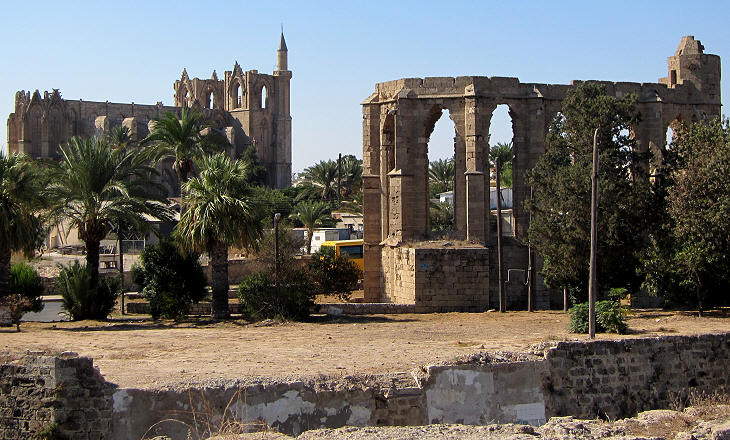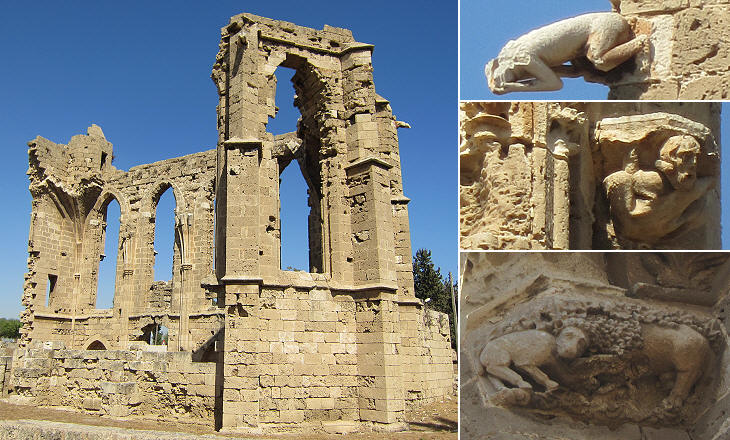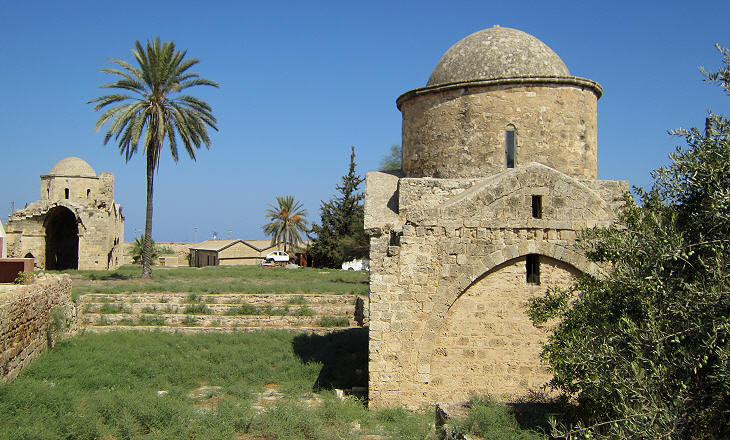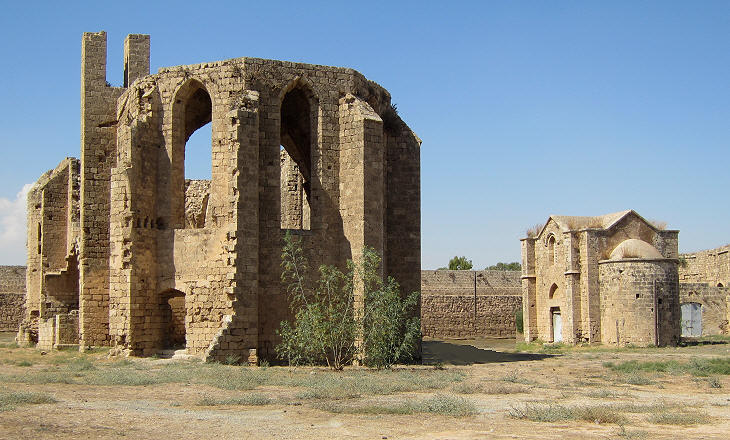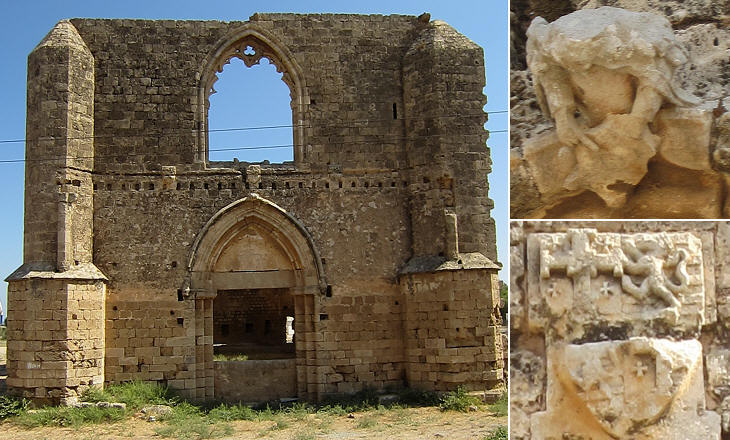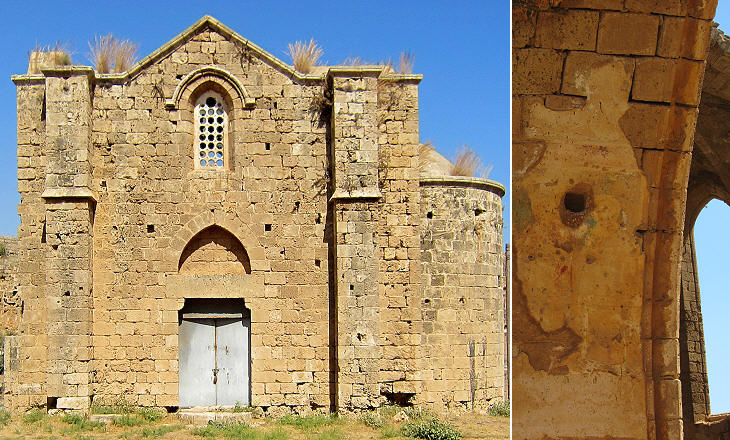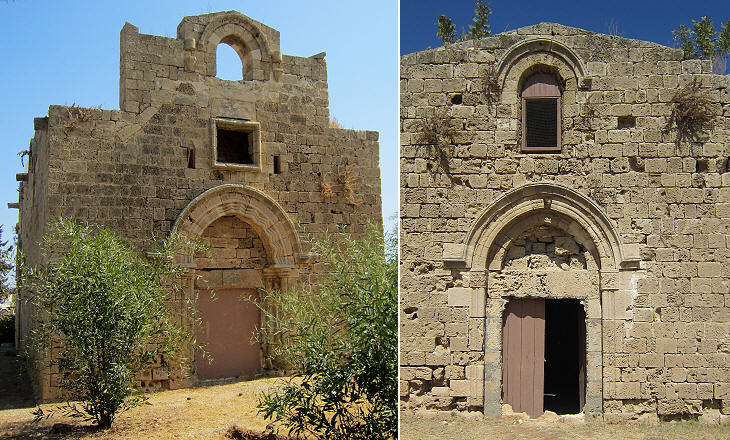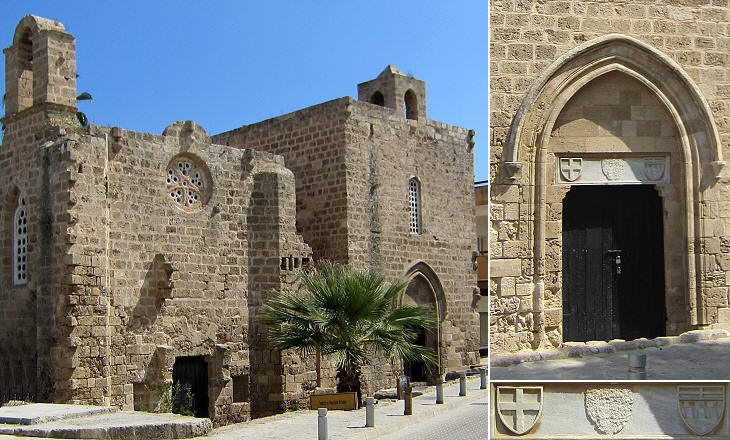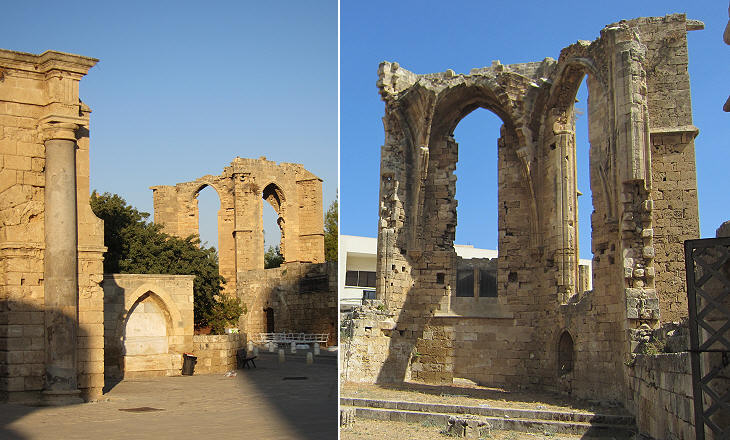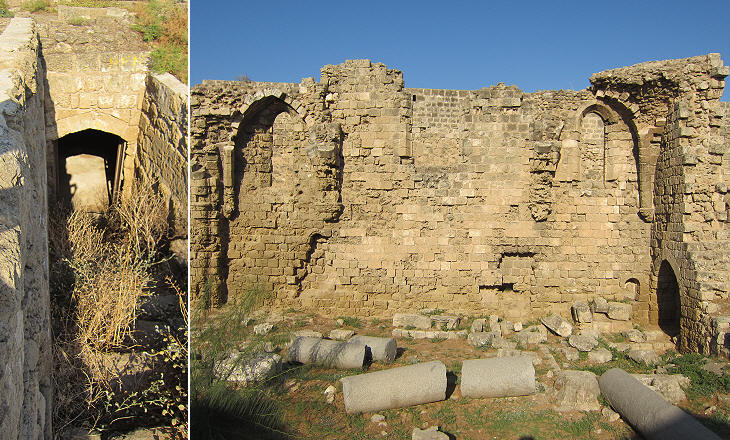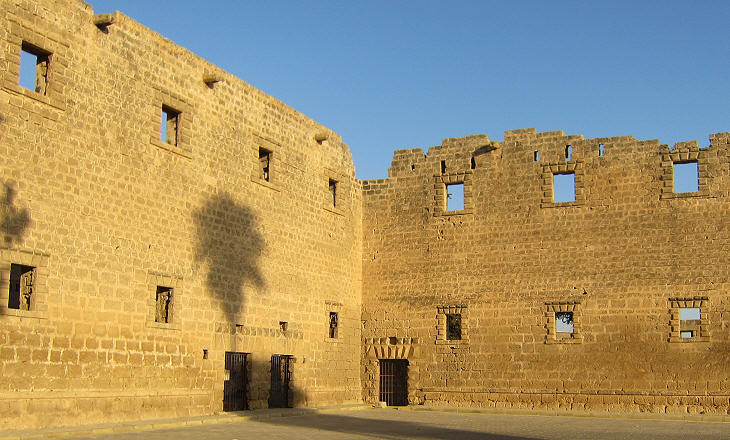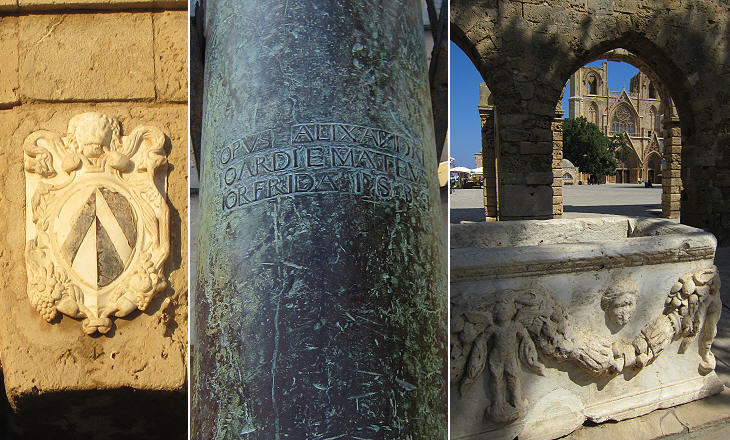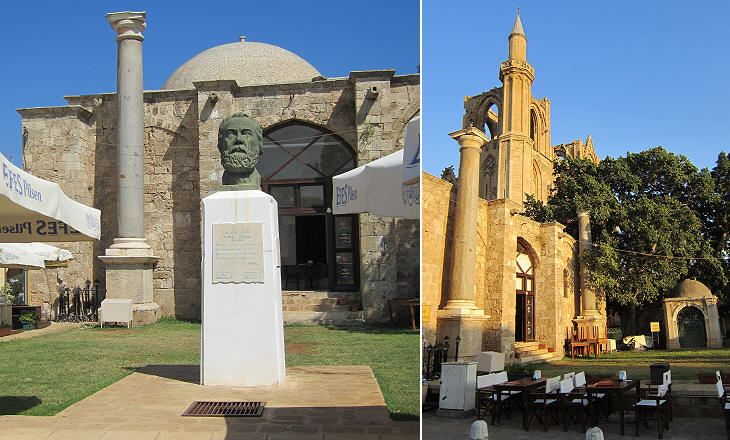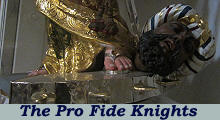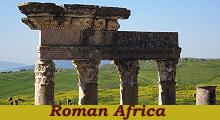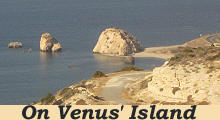  What's New! Detailed Sitemap All images © by Roberto Piperno, owner of the domain. Write to romapip@quipo.it. Text edited by Rosamie Moore. Page revised in January 2013. |
 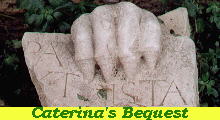 Part three - Other Monuments of Famagusta Part three - Other Monuments of Famagusta(detail of a Venetian Winged Lion in the fortifications of Famagusta) If you came to this page directly, you might wish to read a page with an introduction to this section or a page on the main churches of Famagusta first. Minor Churches
With all her crimes, her luxury and pride? In her lascivious loves will she confide, her harlot Daughters, and her Queen of Lust? The initial verses of this sonnet written by Benedetto dell'Uva, a Benedictine monk (translation found in The Poetical Register and Repository of Fugitive Poetry for 1804) on the eve of the 1571 Ottoman conquest of Famagusta shed some light on the profligacy of its inhabitants. Some travellers thought that the reason for the presence of so many churches was due to the desire of the town's wealthiest citizens to make up for their lascivious behaviour.
It is hardly credible that a city so lately flourishing should be so completely ruined as is Famagosto. Of its numerous palaces and churches not one remains entire. William Turner - Journal of a Tour in the Levant - 1815.
The remaining churches help in understanding how Famagusta was divided into quarters in its heyday. Communities from the Asian mainland lived in the north-western quarter; Latins i.e. communities from Italy and France resided in the north-eastern quarter and the Greeks in the southern part of the town. Their churches were a mixture of traditional Byzantine patterns and Gothic structures.
After the partition of Cyprus in 1974 Turkish authorities forbade access to many areas near the Venetian walls of Famagusta. Ruins of old buildings in this military zone were cleared away and today it is amazing to see old churches standing in a sort of urban desert and believe that in the past they were part of a lively neighbourhood. The image used as background for this page shows the Armenian church seen through a gap in the wall of the Carmelite one.
The church of the Carmelites housed the tomb of St. Peter Thomas, a French Carmelite monk who was appointed Archbishop of Candia and Latin Patriarch of Constantinople by Pope Urban V. He promoted a sort of crusade against the Mamelukes and in 1365 he accompanied King Peter I of Cyprus in a campaign during which they briefly seized Alexandria. According to tradition he was killed by an arrow (and this explains why he is venerated as a martyr), but some sources indicate that he returned to Famagusta where he fell ill and died in January 1366 at the age of sixty. He was canonized in 1609 at a time when feelings for the slaying of the Venetian commander of Famagusta were still running high and the Popes hoped that one day Cyprus would return into Christian hands.
In 1341 a member of the Lusignan family became King of Lesser Armenia, a state founded in 1199 by Armenian knights in the ancient region of Cilicia. A large Armenian community lived at Famagusta; they belonged to a church having at its head the Patriarch of Sis, the capital of Lesser Armenia.
This tiny church is among the few which were turned into mosques. It has decorated portals on three sides. Its original dedication is unknown, however because the neighbourhood was mainly inhabited by communities coming from the Asian mainland (such as the Armenians) it is believed it belonged to an Eastern Church such as the Syriac Orthodox Church (aka Jacobite because it employs the liturgy of St. James the Apostle), whose members still live in today's Syria and Lebanon.
St. Anne's resembles the Carmelite church and this supports the hypothesis that it was a Catholic church included in a Benedictine nunnery which is mentioned by Venetian chronicles. Because of its location however the building could have been the church of the Maronites. Syriac inscriptions have led to identifying a church with the Nestorian community, which is recorded as being one of the richest ones. The term "Nestorian" can apply to a plurality of Eastern Churches which rejected the outcome of the 431 First Council of Ephesus which condemned the views of Nestorius, Patriarch of Constantinople.
The two best known and powerful military orders associated with the Crusades had their chapels side by side; they were deeply involved in the defence of the Latin States of the Levant and they held a large number of castles there. The Templars, after having lost Arwad, their last stronghold in Syria, in 1302, were charged with a long series of crimes by Pope Clement V; the Order was eventually dissolved and its assets were confiscated. The Hospitallers had better luck; after losing Acre in 1291 they escaped to Cyprus and eventually in 1309 they took Rhodes from the Byzantines and they became known as the Knights of Rhodes. The traditional identification of the two churches with the Orders is questioned today by those who believe these buildings were private chapels of some rich Genoese merchants; this hypothesis is supported by the "horizontal" cross on the upper section of one of the coats of arms (see the coat of arms of Pope Innocent VIII of the Cybo Genoese family - it opens in a separate window).
The Franciscans had a large monastery at the centre of the town. The Order was established on the island at a very early stage in memory of the visit made by St. Francis of Assisi on his way to the Holy Land. In 1601 materials were taken from the church to build an adjoining hammam.
Famagusta was said to have a church for each day of the year. Although this was clearly an exaggeration, by wandering around one sees the ruins of many churches which have not been identified yet (and maybe never they will be as they are completely neglected and are bound to disappear). Venetian Memories
The Venetians moved the capital of Cyprus from Nicosia to Famagusta and built a Renaissance palace opposite the Cathedral. It was preceded by a portico decorated with granite columns coming from Salamis, an ancient town four miles north of Famagusta.
Palazzo del Provveditore was not just the residence of the Venetian governor of Cyprus, but it included a series of buildings which housed tribunals and administrative offices. The bugnato frames of doors and windows are rather unusual in Venetian architecture, but they were employed by Michele Sanmicheli, a Renaissance military architect, in the design of Forte S. Andrea in Venice.
The conquest of Cyprus and in particular of Famagusta cost the Sultan a fortune and entailed the loss of many valiant officers and soldiers, yet the Ottoman interest for the island and the town seems to have vanished soon after the conquest. Venetian buildings were not restored and they were left to crumble until an earthquake in 1734 caused the collapse of many walls.
A medrese (Koranic school) built near the cathedral is one of the very few monuments left by the Ottomans at Famagusta. It is flanked by two granite columns which supported statues of the Winged Lion, the symbol of Venice. In August 1571 Marcantonio Bragadin, Venetian governor of the island, was tied to the right column and he was flayed alive in breach of the agreement signed before surrendering the town.
See the other pages of this section: Famagusta - The Walls Famagusta - Main Churches Nicosia - Walls and Houses Nicosia - Churches and Mosques Cirenes (Kyrenia) An Excursion to Bellapais Larnaca  SEE THESE OTHER EXHIBITIONS (for a full list see my detailed list). |
